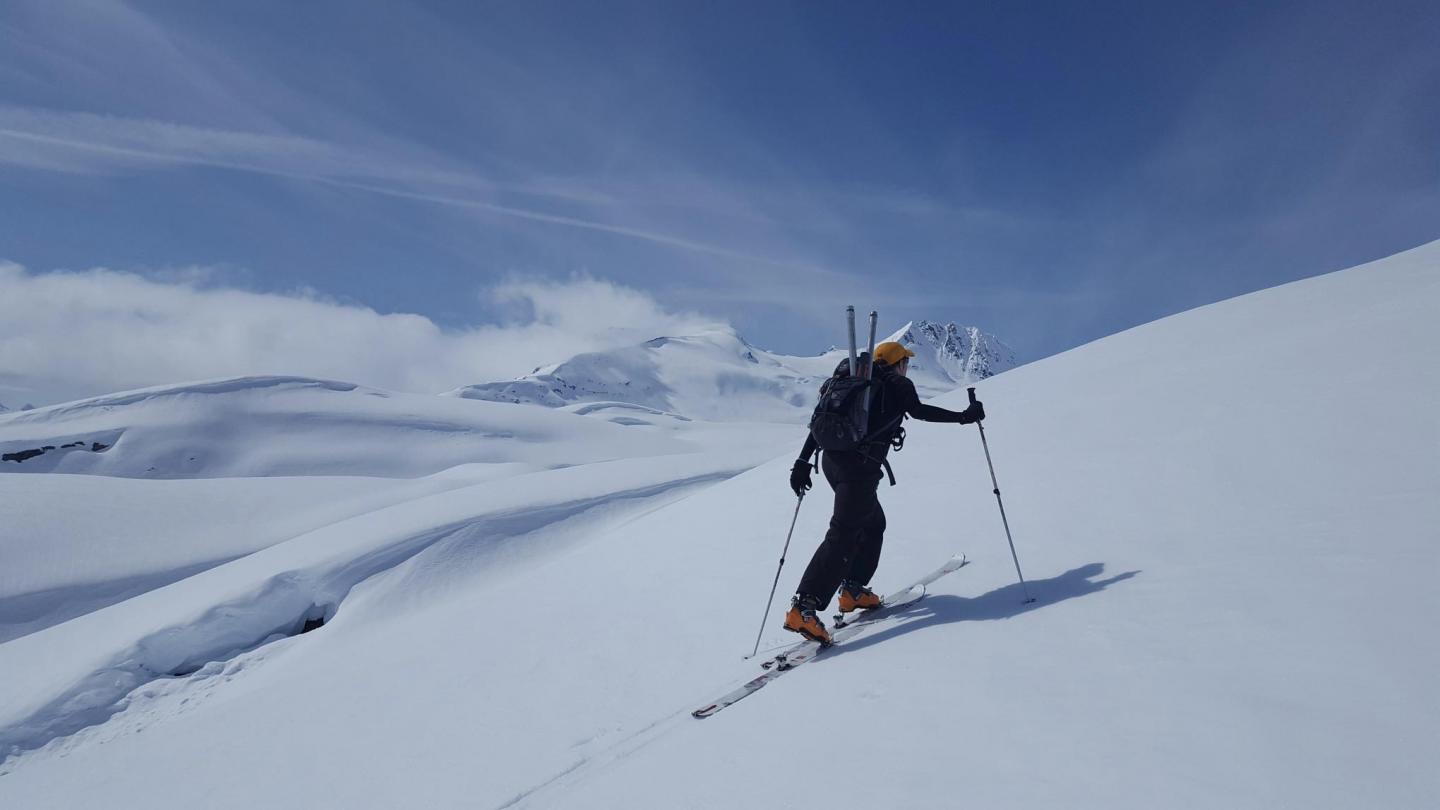
Credit: Photo by Ryan Crumley
CORVALLIS, Ore. – Oregon State University researchers have developed a new computer model for calculating the water content of snowpacks, providing an important tool for water resource managers and avalanche forecasters as well as scientists.
“In many places around the world, snow is a critical component of the hydrological cycle,” said OSU civil engineering professor David Hill. “Directly measuring snow-water equivalent is difficult and expensive and can’t be done everywhere. But information about snow depth is much easier to get, so our model, which more accurately estimates snow-water equivalent from snow depth than earlier models, is a big step forward.”
The findings, published in The Cryosphere, are related to a NASA-funded snow depth project co-led by Hill and also involving Oregon State Ph.D. student Ryan Crumley.
The project is called Community Snow Observations and is part of NASA’s Citizen Science for Earth Systems program. Snowshoers, backcountry skiers and snow-machine users are gathering data to use in computer modeling of snow-water equivalent, or SWE.
The Community Snow Observations research team kicked off in February 2017. Led by Hill, Gabe Wolken of the University of Alaska Fairbanks and Anthony Arendt of the University of Washington, the project originally focused on Alaskan snowpacks. Researchers then started recruiting citizen scientists in the Pacific Northwest. Currently, the project has more than 2,000 participants.
The University of Alaska Fairbanks has spearheaded the public involvement aspect of the project, while the University of Washington’s chief role is managing the data. Hill and Crumley are responsible for the modeling.
In addition to snow depth information collected and uploaded by recreationists using avalanche probes, vast amounts of data are also available thanks to LIDAR, a remote sensing method that uses a pulsed laser to map the Earth’s topography.
The new model developed by the Community Snow Observations team and collaborators at the University of New Hampshire calculates snow-water equivalent by factoring in snow depth, time of year, 30-year averages (normals) of winter precipitation, and seasonal differences between warm and cold temperatures.
“Using those climate normals rather than daily weather data allows our model to provide SWE estimates for areas far from any weather station,” Hill said.
Researchers validated the model against a database of snow pillow measurements – a snow pillow measures snow-water equivalents via the pressure exerted by the snow atop it – as well as a pair of large independent data sets, one from western North America, the other from the northeastern United States.
“We also compared the model against three other models of varying degrees of complexity built in a variety of geographic regions,” Hill said. “The results show our model performed better than all of them against the validation data sets. It’s an effective, easy-to-use means of estimation very useful for vast areas lacking weather instrumentation – areas for which snow depth data are readily available and daily weather data aren’t.”
###
In addition to NASA, the National Science Foundation and the Consortium of Universities for the Advancement of Hydrologic Science supported this research. The codes needed to make this conversion from snow depth to SWE are freely available from the project team.
Media Contact
David Hill
[email protected]
Original Source
https:/
Related Journal Article
http://dx.



